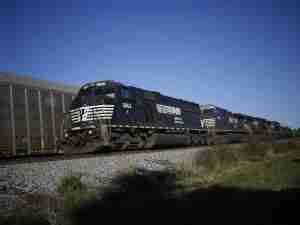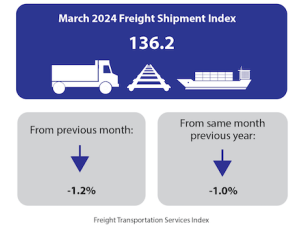Pilot programs involving new technology aimed at understanding driver behavior and the lone-worker environment were some of the many topics discussed at the two-day conference. In addition, the presentations went beyond addressing large trucks to include personal vehicles used for work, vans, utility vehicles and more.
In 2006, 5703 people died from on-the-job injuries in the US and nearly one out of four of those fatal work injuries were transportation related. Worldwide, roadway crashes and fatalities are at an all time high. In the US there were 6,159,000 vehicle crashes in 2005 resulting in the death of 43,443 people and injuring 2.7 million more. Those accidents cost the US $230.6 billion. For businesses, the Federal Motor Carrier Safety Administration (FMCSA) estimates that the per crash cost for a fatal crash involving a company vehicle to be $3,604,518.
Topics offered at the conference included 'in-vehicle technology: managing crash risk before the crash occurs', 'diagnosing fleet safety systems to achieve involvement, exemplary compliance, and sustained loss reduction', 'best practices in hazardous materials transportation', 'event recorders ' how one company's pilot program proved to be a success', 'what are the leaders in fleet safety doing? -- what separates the best from the rest', 'an overview of new technologies to improve transportation safety', 'update from the FL cargo theft task force', 'improving driver safety through feedback', and, 'building safety into your company's retention process'.
Speakers included Lt. Bill Shiver of the FL Highway Patrol, Captain Bruce Bugg of the GA Department of Public Safety, retired UPS Corporate Fleet Safety Manager Charlie Halfen, UPS Vice President of Health and Safety for Freight Phil Warren, Georgia Institute of Technology Assistant Professor- School of Civil and Environmental Engineering's Jochen Teizer, Ph.D., Senior Loss Prevention Specialist for Risk & Insurance Management Company (RIMCO) Bill Hinderks, Director of Safety for DS Waters of America Mike Belcher, CSP, Greyhound Lines, Inc. Safety Director Alex Guariento, Novartis Pharmaceuticals Corporation's Michele L. Tokar, Fed Ex Express Managing Director of Corporate Safety, Health and Fire Prevention's Scott Mugno, President of Daecher Consulting Group Carman Daecher, Vice President and General Counsel ' National Tank Truck Carriers, Inc.'s Tom Lynch, ASSE Transportation Practice Specialty Administrator Doug R. Cook and Liberty Mutual Research Institute for Safety's Director of Transportation Technical Consulting Services Dave Melton, CRSP, CDS.
Seatbelts and company programs aimed at reducing aggressive and distracted driving can work, conference participants said, but many are looking at in-vehicle cameras, vehicle and cargo tracking systems and the importance of safety coaching and actively managing employee performance.
One attendee from North Carolina noted 27 firefighters from one town lost their lives due to traffic crashes and not wearing their seatbelts one year. Town officials then developed and implemented a program aimed at increasing seatbelt use among firefighters. The program, he said, worked. They saw a major reduction in traffic crash related on-the-job deaths and a major increase in use of seatbelts for firefighters in just one year.
Attendees agreed that safety is good business and transportation cr







